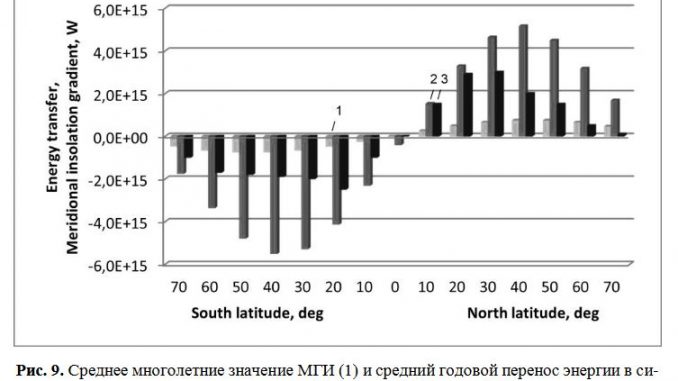
Valery Fedorov1,2
Denis Frolov1,3
1Lomonosov Moscow State University, Moscow, Russia
2E-mail: fedorov.msu@mail.ru,
3E-mail: frolov@geogr.msu.ru
Abstract. The work is devoted to the use of methods of geoinformatics for the purposes of bioenergy. The main methods and trends in the development of this scientific area over the past 50 years are described. A review of international and domestic practice of research in this area has been carried out. Various methods of mapping bioenergy resources are presented, as well as tools that solve the problem of finding optimal places for placing energy facilities on biomass resources. The specifics of spatial data used in solving the problems of the bioenergy industry and the features of working with them in the environment of geographic information systems (GIS) are described.
Keywords: bioenergy, mapping methods, geoinformation systems, resources, geodatabases
Acknowledgement. The work was carried out in accordance with the state budget topic of the Faculty of Geography of Moscow State University “Paleoclimates, evolution of the natural environment and long-term forecast of its changes” (121051100135-0), “Danger and risk of natural processes and phenomena” (121051300175-4) and “Evolution of the cryosphere under climate change and anthropogenic impact” (121051100164-0).
References
- Connolly R., Soon W., Connolly M., Baliunas S., Berglund J., Butler C.J., Cionco R.G., Elias A.G., Fedorov V.M., Harde H., Henry G.W., Hoyt D.V., Humlum O., Legates D.R., Luning S., Scafetta N., Solheim J.E., Szarka L., van Loon H., Velasco Herrera V.M., Willson R.C., Yan H., Zhang W. How much has the Sun influenced Northern Hemisphere temperature trends? An ongoing debate // Research in Astronomy and Astrophysics, 2021. V. 21. 6. P. 1 – 68. DOI: 10.1088/1674-4527/21/6/131
- Milankovich M. Matematicheskaya klimatologiya i astronomicheskaya teoriya kolebanij klimata. M.–L.: GONTI, 1939. 208 s.
- Brouwer D., Van Woerkom A.J.J. The secular variation of the orbital elements of the principal planets // Astronomical Papers, 1950. V. 13. P. 81 – 107.
- Berger A. Long-term variations of daily insolation and Quaternary Climatic Changes // Journal of Atmospheric Science, 1978 (b). V. 35(12). P. 2362 – 2367.
- Bretagnon P. Theorie du movement de l`ensemble des planetes. Solution VSOP82 // Astronomy and Asrtrophysics, 1982. V. 114. P. 278 – 288.
- Borisenkov E. R., Tsvetkov A.V., Agaponov S.V. On some characteristics of insolation changes in the past and the future // Climatic Change, 1983. № 5. P. 237 – 244.
- Laskar J., Joutel F., Boudin F. Orbital, precessional and insolation quantities for the Earth from – 20 Myr to + 10 Myr // Astron. and Astrophys., 1993. V. 287. P. 522 – 533.
- Cionco R.G., Soon W.W-H. Short-Term Orbital Forcing: A Quasi-Review and a Reappraisal of Realistic Boundary Conditions for Climate Modeling // Earth-Science Reviews, 2017. V. 166. P. 206 – 222.
- Fedorov V.M., Kostin A.A. The Calculation of the Earth`s insolation for the 3000 BC – AD 2999 // Processes in GeoMedia. 2020. V. I. Pp. 181–192. DOI: 10.1007/978-3-030-38177-6_20.
- Monin A. S., Shishkov Yu. A. Climate as a problem of physics // Physics–Uspekhi, 2000, 43:4,. 381–306. DOI: 10.1070/PU2000v043n04ABEH000678
- Temperature data. URL: http://www.cru.uea.ac.uk/cru/data/temperatur , data obrashcheniya 23.06.2022.
- Climate Change, 2013. Chapter 8. Anthropogenic and natural radiative forcing. P. 659 – 740.
- Fedorov V.M. Spatial and temporal variation in solar climate of the Earth in the present epoch // Izvestiya, Atmospheric and oceanic physics, 2015. V. 51. № 8. P. 779 – 791. DOI: 10.1134/S0001433815080034.
- NASA, Jet Propulsion Laboratory California Institute of Technology (JPL Solar System Dynamics). URL: http://ssd.jpl.nasa.gov – data obrashcheniya 23.06.2022.
- Kopp G., Lean J. A new lower value of total solar irradiance: Evidence and climate significance // Geophysical Research Letters, 2011. V. 37. L01706. DOI: 10.1029/2010GL045777.
- Fedorov V.M. Features of the Earth’s Solar Climate Changes in the Present Epoch // Geomagnetism and Aeronomy, 2020. V. 60. № 7. Pp. 993–998. DOI: 10.1134/S0016793220070117.
- Davis B. A. S., Brewer S. Orbital forcing and role of the latitudinal insolation/temperature gradient // Clim. Dyn., 2009. V. 32. P. 143–65
- Soon W., Legates D. R. Solar Irradiance modulation of Equator-to-Pole (Arctic) temperature gradients: Empirical evidence for climate variation on multi-decadal timescales // Journal of Atmospheric and Solar-Terrestrial Physics, 2013. 93. 45–56
- Cionco R. G., Soon W. W.-H., Quaranta N. E. On the calculation of latitudinal insolation gradients throughout the Holocene // Advances in Space Research, 2020. V. 66. P. 720–742 https://doi.org/10.1016/j.asr.2020.04.030
- Palmen E., N’yuton Ch. Cirkulyacionnye sistemy atmosfery. L.: Gidrometeoizdat, 1973. 616 s.
- Lorenc E.N. Priroda i teoriya obshchej cirkulyacii atmosfery. L.: Gidrometeoizdat, 1970. 260 s.
- Pogosyan H. Ciklony. L.: Gidrometeoizdat, 1976. S. 148.
- AOML NOAA. URL: http://www.aoml.noaa.gov/hrd/tcfaq/tcfaqE.html
- WMO. URL: https://public.wmo.int/ru
- Peixoto J.P., Oort A.H., 1984. Physics of climate. Rev. Modern Phys,, Vol. 56, No. 3,. pp. 365 – 429.
- Trenberth K.E., Caron J.M., 2001. Estimates of meridional atmosphere and ocean heat transports. American Meteorological Society, Vol.14, pp. 3334 – 3343.
- Fedorov V.M. Variations of the earth`s insolation and especially their integration in physical and mathematical models of the climate // Physics Uspekhi, 2019. V. 62. № 1. Pp. 32–45. DOI: 10.3367/UFNe.2017.12.038267
